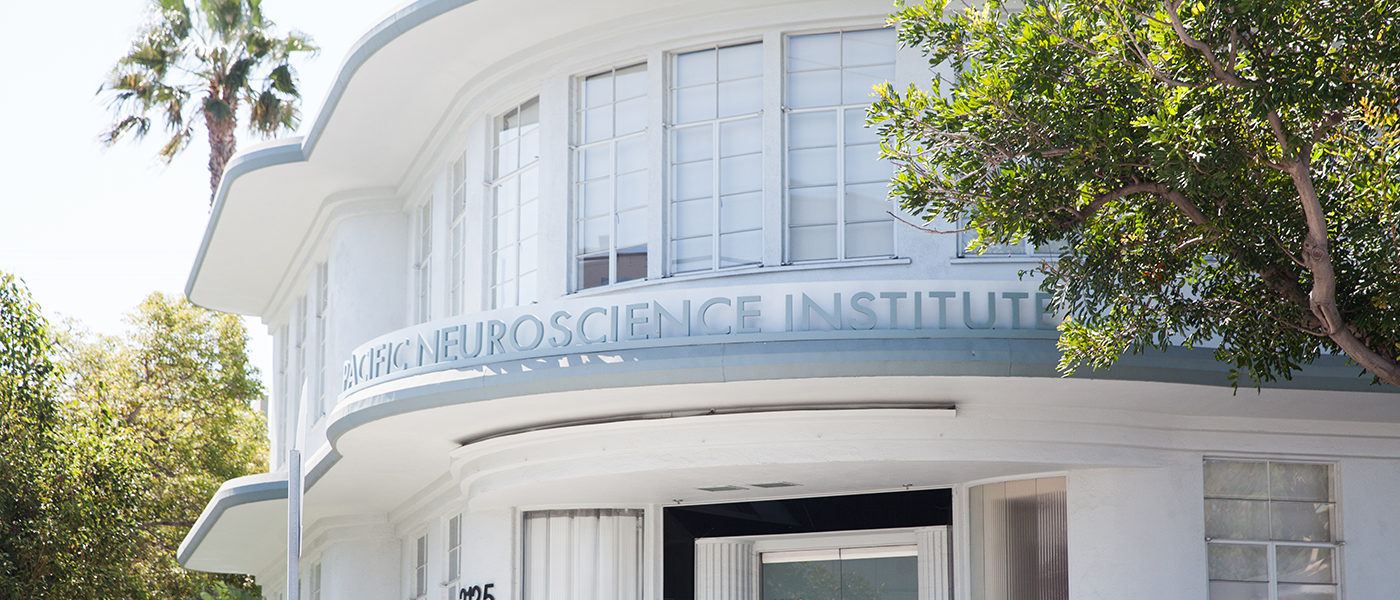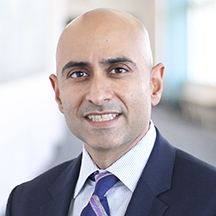
Synkinesis
What is synkinesis?
Facial synkinesis refers to abnormal regrowth of facial nerve fibers which may result in involuntary (unwanted) contraction of certain muscles during other intended facial movement.
Examples of synkinesis include:
- When you smile, the eye on the affected side may close
- When you smile, your neck muscles tighten
- When you blink, or close your eye, the corner of the mouth on the affected side pulls up
- When you chew your eye closes
Facial synkinesis may occur in anyone who has a history of facial nerve paralysis, but it is most often seen in patients with delayed recovery of facial nerve function (i.e. greater than 2-3 months).
It is less common in Bell’s palsy (10%) and more often seen in patients with Ramsay Hunt Syndrome (30%). Synkinesis may also occur if the facial nerve is harmed or injured following removal of a brain tumor, salivary gland tumor, or as a result of trauma to the head or face.
Synkinesis is not typically isolated to one part of the face and usually affects multiple regions such as the eye, mouth and neck. It affects each patient differently.
Some patients with synkinesis do not seek treatment while others require a multidisciplinary approach that includes a facial plastic surgeon, physical/occupational therapists and/or a speech-language pathologist.
How is synkinesis diagnosed?
Synkinesis is a clinical diagnosis, requiring your physician to perform a thorough physical examination of the facial nerve. Since the signs and symptoms may be subtle, it is best for symptoms to be documented with digital photography and/or video if possible.
What are the common symptoms of synkinesis?
Synkinesis occurs after complete facial paralysis has resolved and you start to experience recovery and reinnervation of the affected side of your face. It may take 2-3 months after the recovery is completed and patients will begin to notice the involuntary “linking of movements.” In addition to the unwanted linking of movements, patients may also complain of pain or tenderness in these locations as well, with or without movement. In most cases, synkinesis will not resolve completely and will require continued therapy for the remainder of the patients lifetime.
The types of synkinesis that are most often observed are:
- Oral-ocular: when moving the mouth (eg. To smile, lip pucker, chew) the eye on the affected side will partially/fully close. However, the unaffected eye will remain wide open
- Ocular-oral: when elevating the eyebrows or closing the eyes, the corner of the mouth will raise on the affected side
- Midfacial: at rest or with eye/mouth movement the cheek on the affected side will tighten leading to a deeper crease at the nasolabial fold and pain/discomfort in the cheek area
- Mentalis: when initiating eye or mouth movement, the chin will experience a dimpling on the affected side
- Platysma: when moving the mouth, the neck muscles on the affected side will tighten. This can prevent full smile elevation and pull the corner of the mouth downward
How do you treat facial synkinesis?
The goal for treating synkinesis is to reduce the unwanted facial movement and to restore balance to the face. Since each patient has a unique type of synkinesis, the treatment of synkinesis will vary from patient to patient. Most, but not all, patients will benefit from a multidisciplinary approach that includes facial therapy by an expert in facial physical/occupational therapy, speech language pathology, and plastic surgery of the face.
There are several excellent methods used to treat facial synkinesis. Below we have listed these treatments from minimally invasive (facial therapy) to invasive surgery (selective neurolysis).
Frequently asked questions about synkinesis
Synkinesis will not go away completely. However, with continued therapy that may include facial retraining, chemodenervation, and other treatments such as mindfulness, the severity of synkinesis can be reduced.
Most experts that treat patients with facial paralysis use a scoring system to grade severity of synkinesis. The most comprehensive scoring system is the Sunnybrook Facial Grading System which allows for an assessment of facial range of movement, and has a section dedicated to rating the presence of synkinesis.
Another helpful tool is the Synkinesis Assessment Questionnaire (SAQ). The SAQ can provide a reliable measurement of synkinesis and how it affects the patient.
Many clinicians may also use digital photography and video to score a patients facial paralysis and synkinesis. The EFACE scoring system is used to assess patients at rest, with dynamic facial movement and to also assess severity of synkinesis.
Together these tools provide the information your clinicians need to properly evaluate and treat synkinesis.
Synkinesis doctor and specialist
Facial Nerve Disorders Program Director and Otolaryngologist, Dr. Amit Kochhar, has over ten years of experience managing patients with facial paralysis. He treats and is accepting new patients from all over California, Arizona, Nevada, Oregon and Washington.
Meet Dr. Kochhar

In-Person or Virtual Video Visit
Our specialists have consultation openings for new patients.
